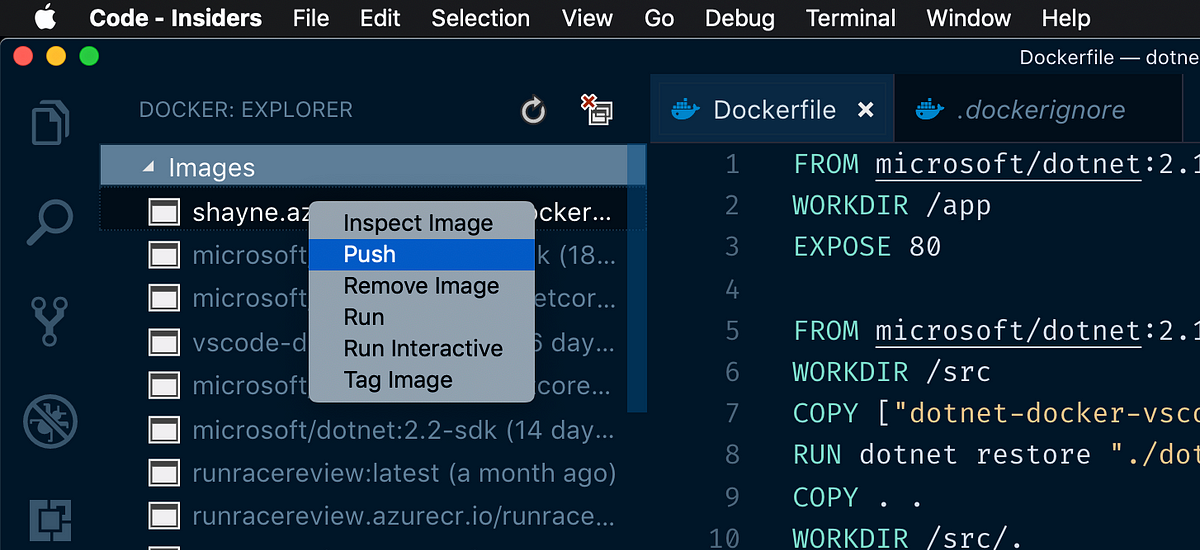Docker images for Kibana are available from the Elastic Docker registry. Thebase image is centos:7.
A list of all published Docker images and tags is available atwww.docker.elastic.co. The source code is inGitHub.
These images contain both free and subscription features.Start a 30-day trial to try out all of the features.
Pull the imageedit
Macos Start Docker Daemon Homebrew
Obtaining Kibana for Docker is as simple as issuing a docker pull commandagainst the Elastic Docker registry.
- Configure docker-machine on macOS. To start Docker Machine via Homebrew, run: brew services start docker-machine To create a default machine (if you don't have one, see: docker-machine ls): docker-machine create -driver virtualbox default Then set-up the environment for the Docker client: eval '$(docker-machine env default)'.
- Docker images for Kibana are available from the Elastic Docker registry. The base image is centos:7. A list of all published Docker images and tags is available at www.docker.elastic.co. The source code is in GitHub. These images contain both free and subscription features. Start a 30-day trial to.
Run Kibana on Docker for developmentedit
Docker Desktop is an application for MacOS and Windows machines for the building and sharing of containerized applications and microservices. Docker Desktop delivers the speed, choice and security you need for designing and delivering containerized applications on your desktop. Some container disk I/O is much slower than expected. See docker/for-mac#5389. Disk flushes are particularly slow due to the need to guarantee data is written to stable storage on the host. This could be problematic given that Docker disk performance on macOS was already dreadful on intel machines.
Start Docker Macos File
Kibana can be quickly started and connected to a local Elasticsearch container for developmentor testing use with the following command:
Configure Kibana on Dockeredit
The Docker images provide several methods for configuring Kibana. Theconventional approach is to provide a kibana.yml file as described inConfiguring Kibana, but it’s also possible to useenvironment variables to define settings.
Bind-mounted configurationedit
One way to configure Kibana on Docker is to provide kibana.yml via bind-mounting.With docker-compose, the bind-mount can be specified like this:
Environment variable configurationedit
Under Docker, Kibana can be configured via environment variables. Whenthe container starts, a helper process checks the environment for variables thatcan be mapped to Kibana command-line arguments.

For compatibility with container orchestration systems, theseenvironment variables are written in all capitals, with underscores asword separators. The helper translates these names to validKibana setting names.
All information that you include in environment variables is visible through the ps command, including sensitive information.
Some example translations are shown here:
Table 1. Example Docker Environment Variables
Environment Variable | Kibana Setting |
|
|
|
|
|
|
In general, any setting listed in Configure Kibana can beconfigured with this technique.
These variables can be set with docker-compose like this:
Since environment variables are translated to CLI arguments, they takeprecedence over settings configured in kibana.yml.
Docker defaultsedit
The following settings have different default values when using the Dockerimages:
|
|
|
|
|
|
|
|
These settings are defined in the default kibana.yml. They can be overriddenwith a custom kibana.yml or viaenvironment variables.
If replacing kibana.yml with a custom version, be sure to copy thedefaults to the custom file if you want to retain them. If not, they willbe 'masked' by the new file.
Most Popular
